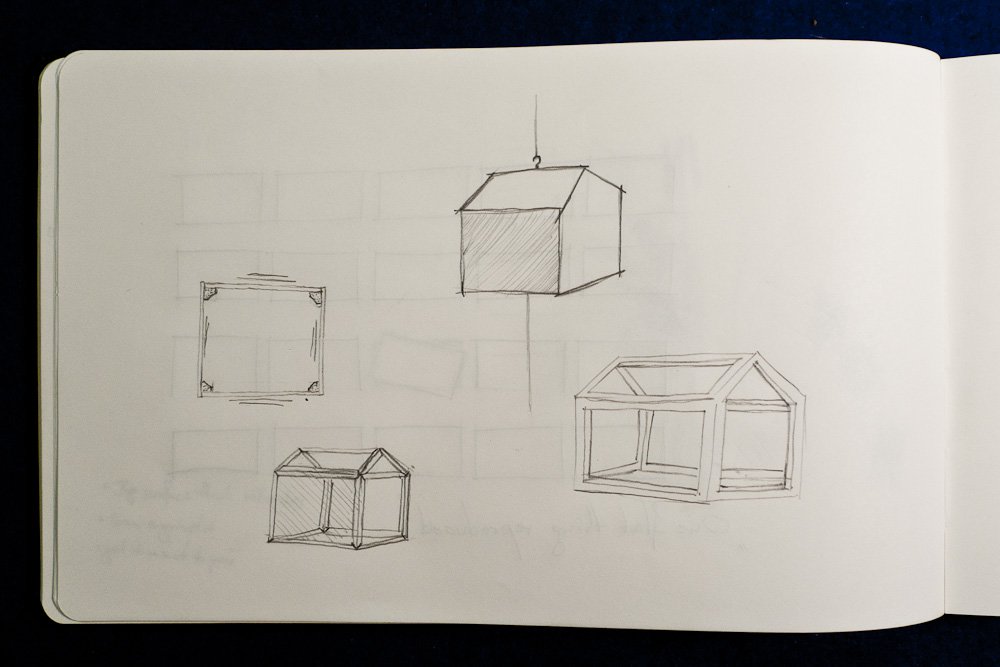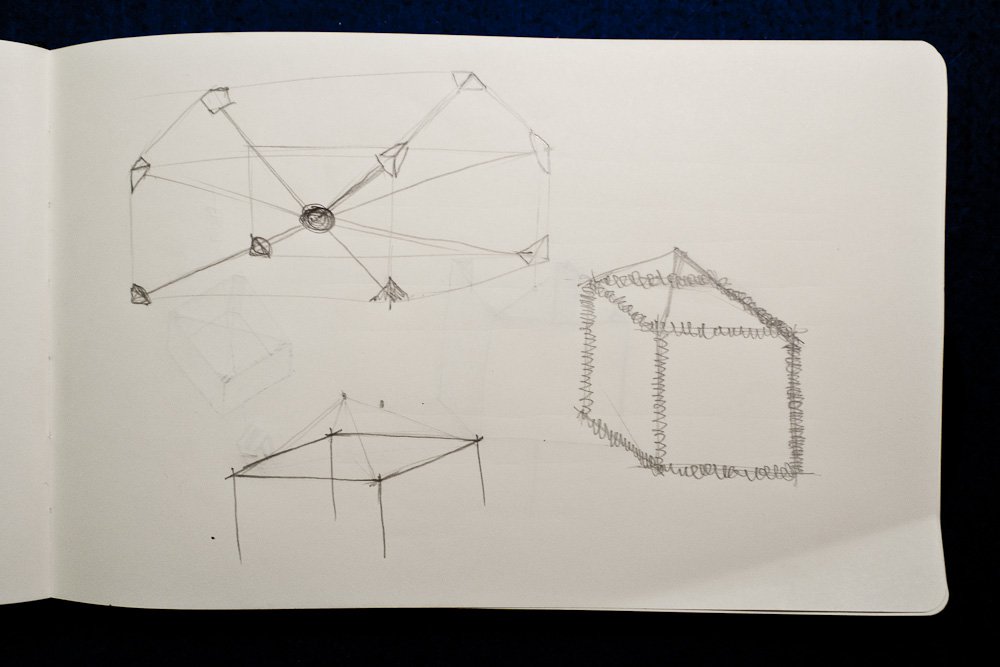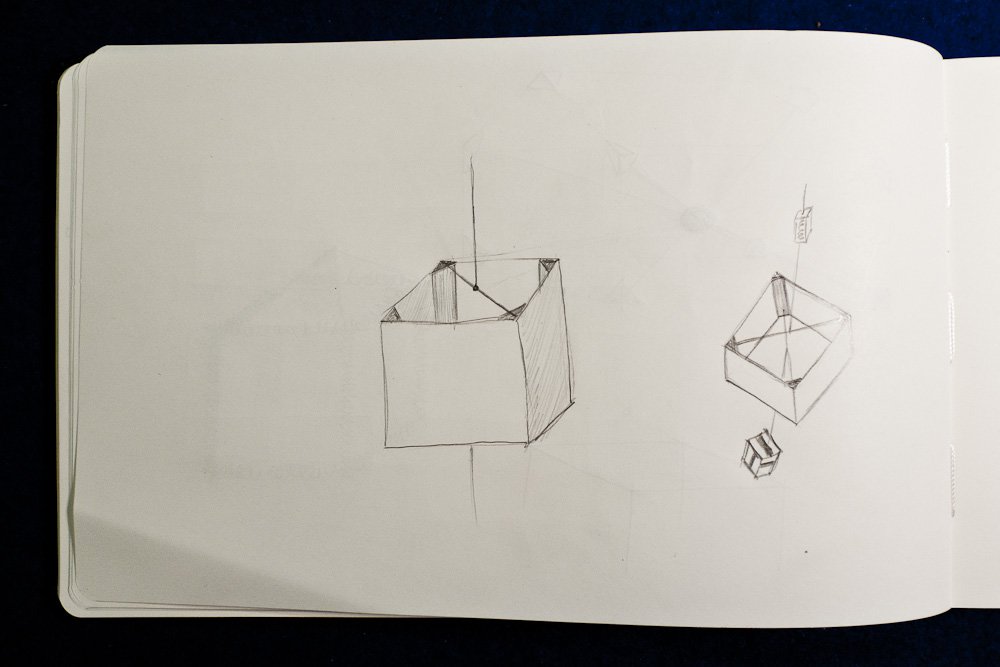Yesterday, I started to look again into the upstairs work. The first thing I did was to recap what we did so far. Today, I settled on concentrate designing a box for symbolic representation as I wrote about earlier. Basically, I envisage a small structure (with an edge length of about 15cm), hanging on a thread from the ceiling. it should reproduce the vibrations that are transferred from the remote station, without actually incorporating a loudspeaker. In my imagination, it somehow resembles a speaker in itself. It therefore should be a composit of an elastic (to support the vibrations) and a rigid part (to transfer the vibrations to the air). In the best case, its shape reminds of a mini house (i.e., a cube with a roof).
In the photos below, I captured the various concepts I came up with. They are variations of these themes
- Solid, wooden structure. Possibly attached to a vibration-inducing device. Might not really work as a loudspeaker as it does not easily induce pressure wavesto the surrounding air.
- Wooden wire frame structure with paper walls. This is a very light structure, where it is easy to add an LED-based lighting. In this structure, it is needed to produce dynamic pressure within the (sealed) structure in order to make it vibrate.
- Metal wire frame attached with loose metal objects. Here, the induced vibration causes the objects to produce a clanking noise.
- Wooden wire frame with walls made of an elastic material, e.g., kappa. This structure (as seen in the first concept photo in the upper left) is based on a technique to transfer vibrations in the wooden body of a violin. Here, the wooden wedges serve as levers to pass on the vibrations from one side to the other.
- Light structure based on paper walls. This structure would be supported by metal rods, each growing from one central spot inside the structure to one of its edges.


